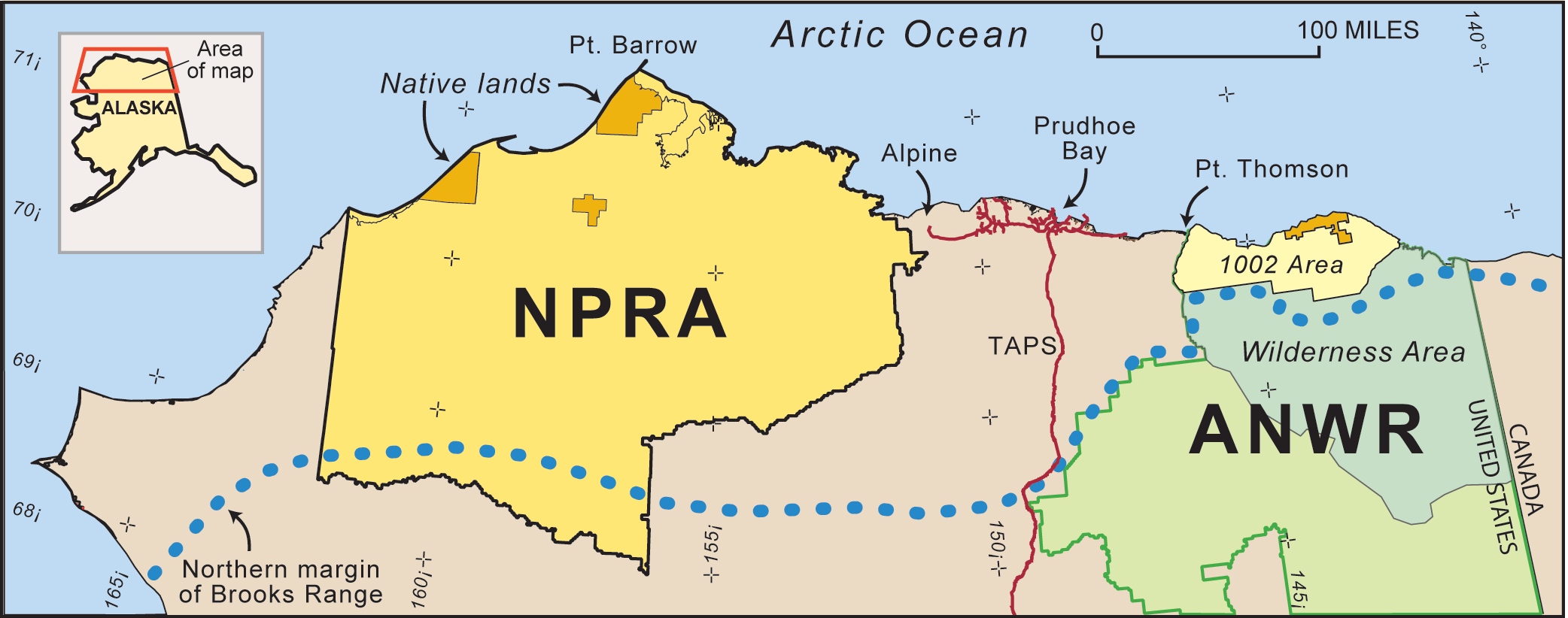|
E. L. Patton Yukon River Bridge
The Yukon River Bridge, officially known as the E. L. Patton Bridge, is a girder bridge spanning the Yukon River in Yukon-Koyukuk Census Area, Alaska, United States. The bridge carries both the Dalton Highway and the Alaska Pipeline in connecting Fairbanks with Deadhorse near the Arctic Ocean and the Prudhoe Bay Oil Field. It is the only bridge crossing of the Yukon in Alaska. History As part of construction of the Trans-Alaska Pipeline System, a permanent crossing of the Yukon River became necessary in order to complete the project. In December 1973, the state announced that it would begin accepting bids for the construction of the span. To be constructed as joint venture between the Alyeska Pipeline Service Company and the State of Alaska, the bridge was to be supported by tiers anchored to bedrock beneath the river. At its highest point, the span would rise approximately above the river with its length changing by nearly between the summer and winter months. A consortiu ... [...More Info...] [...Related Items...] OR: [Wikipedia] [Google] [Baidu] |
Trans-Alaska Pipeline System
The Trans-Alaska Pipeline System (TAPS) is an oil transportation system spanning Alaska, including the trans-Alaska crude-oil pipeline, 11 pump stations, several hundred miles of feeder pipelines, and the Valdez Marine Terminal. TAPS is one of the world's largest pipeline systems. The core pipeline itself, which is commonly called the Alaska pipeline, trans-Alaska pipeline, or Alyeska pipeline, (or the pipeline as referred to in Alaska), is an long, diameter pipeline that conveys oil from Prudhoe Bay, on Alaska's North Slope, south to Valdez, on the shores of Prince William Sound in southcentral Alaska. The crude oil pipeline is privately owned by the Alyeska Pipeline Service Company. Oil was first discovered in Prudhoe Bay in 1968 and the 800 miles of 48" steel pipe was ordered from Japan in 1969 (US steel manufacturers did not have the capacity at that time) however, construction was delayed for nearly 5 years due to legal and environmental issues. The eight oil compani ... [...More Info...] [...Related Items...] OR: [Wikipedia] [Google] [Baidu] |
Alyeska Pipeline Service Company
The Alyeska consortium refers to the major oil companies that own and operate the Trans-Alaska Pipeline System (TAPS) through the Alyeska Pipeline Service Company. History The Alaska corporation commonly known as Alyeska Pipeline Company was founded in 1970 to design, construct, operate and maintain a pipeline to transport oil from the fields on the North Slope of Alaska where oil was discovered in 1968 to an ice-free deep-water port in Valdez, Alaska. The pipeline was built between March 1975 and June 1977, running from the North Slope fields at Prudhoe Bay to the Marine Terminal at Valdez on Prince William Sound. Alyeska then went on to operate and maintain TAPS. The first oil flowed into the pipeline on June 20, 1977, and the first tanker load departed from Valdez on August 1, 1977. ''Totem Marine Tug & Barge, Inc. v. Alyeska Pipeline Service Co.'' was argued before the Alaska Supreme Court in 1978. The Alyeska Pipeline Service Company was partially responsible for helping t ... [...More Info...] [...Related Items...] OR: [Wikipedia] [Google] [Baidu] |
Road Bridges In Alaska
A road is a linear way for the conveyance of traffic that mostly has an improved surface for use by vehicles (motorized and non-motorized) and pedestrians. Unlike streets, the main function of roads is transportation. There are many types of roads, including parkways, avenues, controlled-access highways (freeways, motorways, and expressways), tollways, interstates, highways, thoroughfares, and local roads. The primary features of roads include lanes, sidewalks (pavement), roadways (carriageways), medians, shoulders, verges, bike paths (cycle paths), and shared-use paths. Definitions Historically many roads were simply recognizable routes without any formal construction or some maintenance. The Organization for Economic Co-operation and Development (OECD) defines a road as "a line of communication (travelled way) using a stabilized base other than rails or air strips open to public traffic, primarily for the use of road motor vehicles running on their own wheels", which i ... [...More Info...] [...Related Items...] OR: [Wikipedia] [Google] [Baidu] |
Buildings And Structures In Yukon–Koyukuk Census Area, Alaska
A building, or edifice, is an enclosed structure with a roof and walls standing more or less permanently in one place, such as a house or factory (although there's also portable buildings). Buildings come in a variety of sizes, shapes, and functions, and have been adapted throughout history for a wide number of factors, from building materials available, to weather conditions, land prices, ground conditions, specific uses, prestige, and aesthetic reasons. To better understand the term ''building'' compare the list of nonbuilding structures. Buildings serve several societal needs – primarily as shelter from weather, security, living space, privacy, to store belongings, and to comfortably live and work. A building as a shelter represents a physical division of the human habitat (a place of comfort and safety) and the ''outside'' (a place that at times may be harsh and harmful). Ever since the first cave paintings, buildings have also become objects or canvasses of much artistic ... [...More Info...] [...Related Items...] OR: [Wikipedia] [Google] [Baidu] |
Bridges In Unorganized Borough, Alaska
A bridge is a structure built to Span (engineering), span a physical obstacle (such as a body of water, valley, road, or rail) without blocking the way underneath. It is constructed for the purpose of providing passage over the obstacle, which is usually something that is otherwise difficult or impossible to cross. There are many different designs of bridges, each serving a particular purpose and applicable to different situations. Designs of bridges vary depending on factors such as the function of the bridge, the nature of the terrain where the bridge is constructed and anchored, and the material used to make it, and the funds available to build it. The earliest bridges were likely made with fallen trees and stepping stones. The Neolithic people built boardwalk bridges across marshland. The Arkadiko Bridge (dating from the 13th century BC, in the Peloponnese) is one of the oldest arch bridges still in existence and use. Etymology The ''Oxford English Dictionary'' traces ... [...More Info...] [...Related Items...] OR: [Wikipedia] [Google] [Baidu] |
Bridges Completed In 1975
A bridge is a structure built to span a physical obstacle (such as a body of water, valley, road, or rail) without blocking the way underneath. It is constructed for the purpose of providing passage over the obstacle, which is usually something that is otherwise difficult or impossible to cross. There are many different designs of bridges, each serving a particular purpose and applicable to different situations. Designs of bridges vary depending on factors such as the function of the bridge, the nature of the terrain where the bridge is constructed and anchored, and the material used to make it, and the funds available to build it. The earliest bridges were likely made with fallen trees and stepping stones. The Neolithic people built boardwalk bridges across marshland. The Arkadiko Bridge (dating from the 13th century BC, in the Peloponnese) is one of the oldest arch bridges still in existence and use. Etymology The ''Oxford English Dictionary'' traces the origin of the wo ... [...More Info...] [...Related Items...] OR: [Wikipedia] [Google] [Baidu] |
Ice Bridge
An ice bridge is a frozen natural structure formed over seas, bays, rivers or lake surfaces. They facilitate migration of animals or people over a water body that was previously uncrossable by terrestrial animals, including humans. The most significant ice bridges are formed by glaciation, spanning distances of many miles over sometimes relatively deep water bodies. An example of such a major ice bridge was that connecting the island of Öland with mainland Sweden approximately 9000 BC. This bridge reached its maximum utility when the glacier was in retreat, forming a low-lying frozen bridge. The Öland ice bridge allowed the first human migration to the island of Öland, which is most readily documented by archaeological studies of the Alby People. [...More Info...] [...Related Items...] OR: [Wikipedia] [Google] [Baidu] |
Cofferdam
A cofferdam is an enclosure built within a body of water to allow the enclosed area to be pumped out. This pumping creates a dry working environment so that the work can be carried out safely. Cofferdams are commonly used for construction or repair of permanent dams, oil platforms, bridge piers, etc., built within water. These cofferdams are usually welded steel structures, with components consisting of Larssen sheet piling, sheet piles, Wale (ship part), wales, and cross timber framing, braces. Such structures are usually dismantled after the construction work is completed. The origin of the word comes from ''coffer'' (originally from Latin ''cophinus'' meaning "basket") and ''dam'' from Proto-Germanic, Proto-German ''*dammaz'' meaning "barrier across a stream of water to obstruct its flow and raise its level"). Uses For dam construction, two cofferdams are usually built, one upstream and one downstream of the proposed dam, after an alternative diversion tunnel or channel ... [...More Info...] [...Related Items...] OR: [Wikipedia] [Google] [Baidu] |
Consortium
A consortium (plural: consortia) is an association of two or more individuals, companies, organizations or governments (or any combination of these entities) with the objective of participating in a common activity or pooling their resources for achieving a common goal. is a Latin word meaning "partnership", "association" or "society", and derives from ("shared in property"), itself from ("together") and ("fate"). Examples Educational The Big Ten Academic Alliance in the Midwest and Mid-Atlantic U.S., Claremont Colleges consortium in Southern California, Five College Consortium in Massachusetts, and Consórcio Nacional Honda are among the oldest and most successful higher education consortia in the World. The Big Ten Academic Alliance, formerly known as the Committee on Institutional Cooperation, includes the members of the Big Ten athletic conference. The participants in Five Colleges, Inc. are: Amherst College, Hampshire College, Mount Holyoke College, Smith College, a ... [...More Info...] [...Related Items...] OR: [Wikipedia] [Google] [Baidu] |
Bedrock
In geology, bedrock is solid Rock (geology), rock that lies under loose material (regolith) within the crust (geology), crust of Earth or another terrestrial planet. Definition Bedrock is the solid rock that underlies looser surface material. An exposed portion of bedrock is often called an outcrop. The various kinds of broken and weathered rock material, such as soil and subsoil, that may overlie the bedrock are known as regolith. Engineering geology The surface of the bedrock beneath the soil cover (regolith) is also known as ''rockhead'' in engineering geology, and its identification by digging, drilling or geophysics, geophysical methods is an important task in most civil engineering projects. Superficial deposition (geology), deposits can be very thick, such that the bedrock lies hundreds of meters below the surface. Weathering of bedrock Exposed bedrock experiences weathering, which may be physical or chemical, and which alters the structure of the rock to leave ... [...More Info...] [...Related Items...] OR: [Wikipedia] [Google] [Baidu] |
Prudhoe Bay Oil Field
Prudhoe Bay Oil Field is a large oil field on Alaska's North Slope. It is the largest oil field in North America, covering and originally containing approximately of oil.Prudhoe Bay Fact Sheet . BP. August 2006. (Adobe Acrobat *.PDF document) The amount of recoverable oil in the field is more than double that of the next largest field in the United States by acreage (the ), while the largest by reserves is the |







